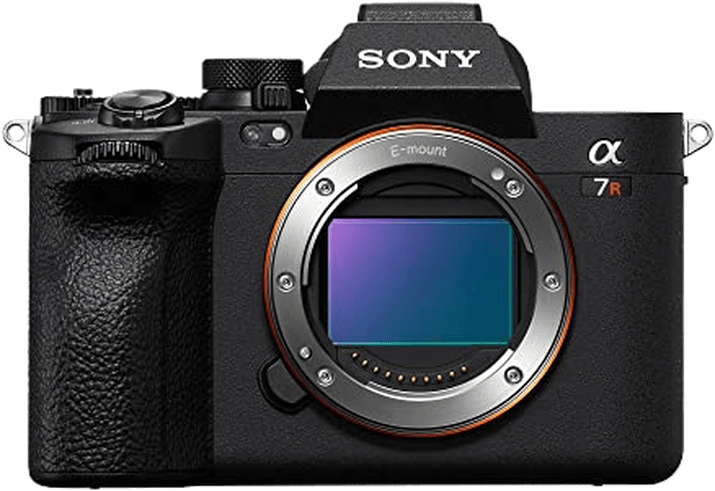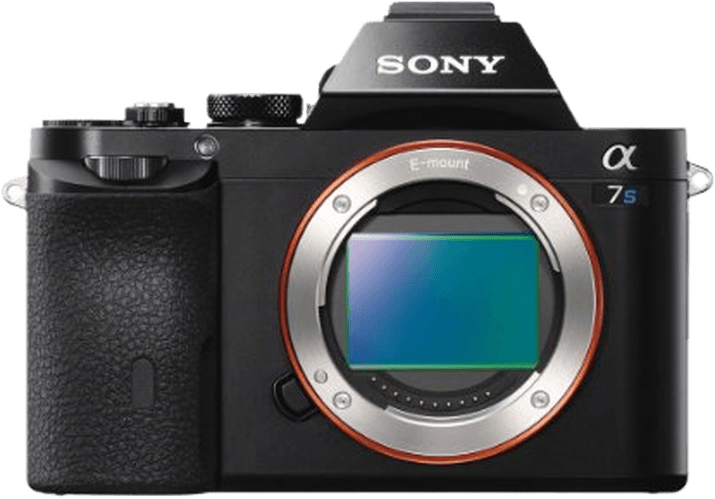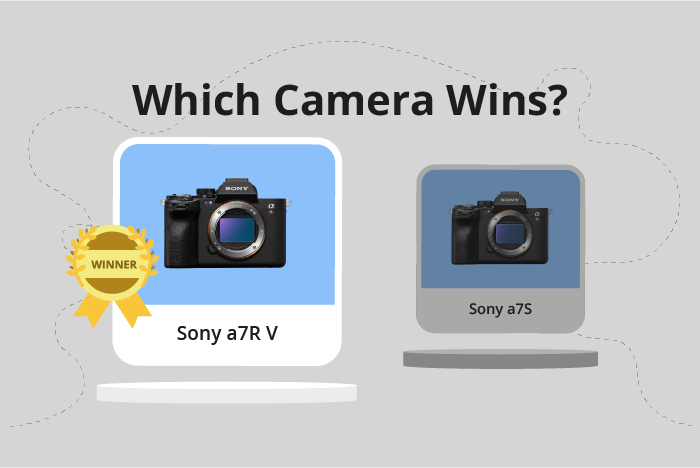Sony a7R V vs a7S Comparison
Sony a7R V

Sony a7S

The Sony a7R V emerges as the winner with a score of 85/100, while the Sony a7S lags behind at 55/100. Both cameras share similarities as mirrorless cameras, released by Sony, with the same camera type. However, the a7R V boasts superior features and performance, justifying its higher score.
The Sony a7R V, released in 2022, offers a better user experience with its larger dimensions (131 x 97 x 82mm) and heavier weight (723g / 1.59lbs). This camera’s launch price is $3999, reflecting its advanced capabilities. On the other hand, the Sony a7S, released in 2014, is more compact and lightweight (127 x 94 x 48mm, 489g / 1.08lbs) but has a lower launch price of $2499, indicating its limitations compared to the a7R V.
While both cameras have their merits, the Sony a7R V’s higher score signifies its superior overall performance and features. The Sony a7S, although older and more affordable, cannot compete with the a7R V’s advancements.
Sony a7R V vs a7S Overview and Optics
The Sony a7R V is the clear winner in optics with a score of 85/100, while the Sony a7S scores 60/100. Both cameras share some common specifications, including a full-frame CMOS sensor, Sony FE lens mount, and the use of Bionz processors. However, the a7R V has a higher resolution, faster shooting speed, and better sensor performance, which contribute to its superior optics score.
The a7R V boasts a 61-megapixel sensor, significantly more than the a7S’s 12.2-megapixel sensor. This difference allows the a7R V to capture more detailed images. Additionally, the a7R V has a shooting speed of 10 frames per second (fps), double the a7S’s 5 fps. This enables the a7R V to capture fast-moving subjects with ease. Another advantage of the a7R V is its Bionz XR processor, which is more advanced than the a7S’s Bionz X processor. Furthermore, the a7R V’s sensor has a DXOMARK score of 94, compared to the a7S’s score of 87, indicating better overall performance.
The a7S does have one advantage over the a7R V: it is a more affordable option. However, this lower price comes at the cost of reduced performance in optics.
Considering the differences in specifications, the Sony a7R V is the superior camera in terms of optics. Its higher resolution, faster shooting speed, and better sensor performance make it a better choice for photographers who prioritize image quality. The Sony a7S, while more affordable, lacks the same level of performance, making it a less desirable option for those seeking top-notch optics.
Sony a7R V vs a7S Video Performance
The Sony a7R V outperforms the Sony a7S in video capabilities, scoring a perfect 100/100 compared to the a7S’s 56/100. Both cameras possess certain similarities in their specifications, but the a7R V has several advantages that contribute to its higher score.
Common features between the two cameras include the ability to record video and adjust video settings. However, the a7R V surpasses the a7S in key areas, such as maximum video resolution and frame rate. The a7R V boasts an impressive 8K video resolution with dimensions of 7680 x 4320, while the a7S only offers Full HD resolution at 1920 x 1080. Furthermore, the a7R V can record at a maximum frame rate of 120fps, double the a7S’s 60fps limit.
In addition to its superior resolution and frame rate, the a7R V also features built-in time-lapse functionality, which the a7S lacks. This added capability allows for more creative and versatile video production with the a7R V.
The Sony a7S does not have any significant advantages over the a7R V in terms of video capabilities. Its lower score reflects its limitations in resolution, frame rate, and features compared to the a7R V.
Taking these factors into account, it is evident that the Sony a7R V is the superior camera for video production. Its higher score is well-deserved due to its exceptional resolution, frame rate, and time-lapse functionality. The Sony a7S, though still a capable camera for basic video recording, falls short in comparison to the a7R V’s advanced features.
Sony a7R V vs a7S Features and Benefits
The Sony a7R V outperforms the Sony a7S in features, boasting a score of 87/100 compared to the a7S’s 54/100. Both cameras share some common specifications, such as the absence of GPS, the presence of WiFi, and flip screens. However, the a7R V excels in several aspects, making it the superior choice in terms of features.
The a7R V’s screen is larger, measuring 3.2 inches compared to the a7S’s 3-inch screen. The screen resolution of the a7R V is also significantly higher, with 2,100,000 dots versus the a7S’s 921,000 dots. This difference results in a sharper and clearer display on the a7R V. Additionally, the a7R V has a touchscreen, while the a7S does not. This feature allows for easier navigation and control on the a7R V.
The a7R V also has Bluetooth connectivity, which the a7S lacks. Bluetooth enables seamless connections with other devices and offers additional control options for the a7R V.
On the other hand, the Sony a7S has fewer features, but this does not necessarily make it an inferior camera. It may suit users who prefer a simpler, more straightforward camera or those who prioritize other aspects, such as video capabilities or optics.
In comparing the features of the Sony a7R V and the Sony a7S, the a7R V emerges as the clear winner. Its larger, higher-resolution touchscreen and Bluetooth connectivity make it a more versatile and user-friendly camera. The a7S, while lacking in features, may still appeal to those who value simplicity or prioritize other camera aspects.
Sony a7R V vs a7S Storage and Battery
The Sony a7R V outperforms the Sony a7S in storage and battery, scoring 73/100 compared to the a7S’s 21/100. Both cameras accept SD/SDHC/SDXC memory cards, but the a7R V also supports CFexpress Type A cards and has two memory card slots, giving it an advantage over the a7S, which only has one slot and supports Memory Stick Duo/Pro Duo/Pro-HG Duo cards.
The a7R V’s battery life is superior, providing 530 shots per charge with its NP-FZ100 battery, whereas the a7S offers 380 shots using the NP-FW50 battery. Additionally, the a7R V allows USB charging, an option unavailable for the a7S.
Although the a7S has lower storage and battery performance, its single memory card slot and compatibility with Memory Stick cards may appeal to some users. However, the a7R V’s longer battery life, USB charging, and additional memory card slot make it a more versatile and reliable choice for most photographers.
Alternatives to the Sony a7R V and a7S
Are you still undecided about which camera is right for you? Have a look at these popular comparisons that feature the Sony a7R V or the Sony a7S:

